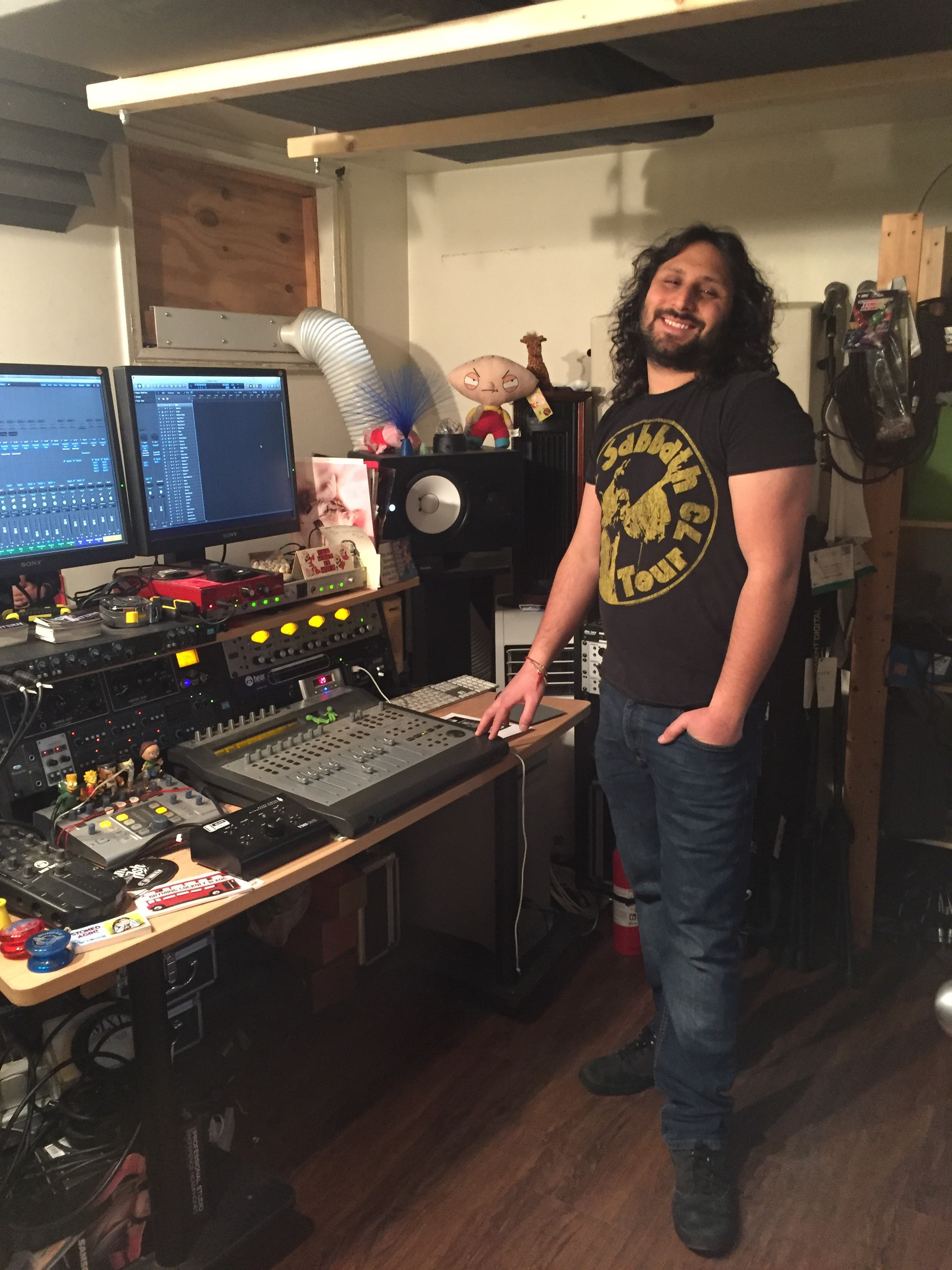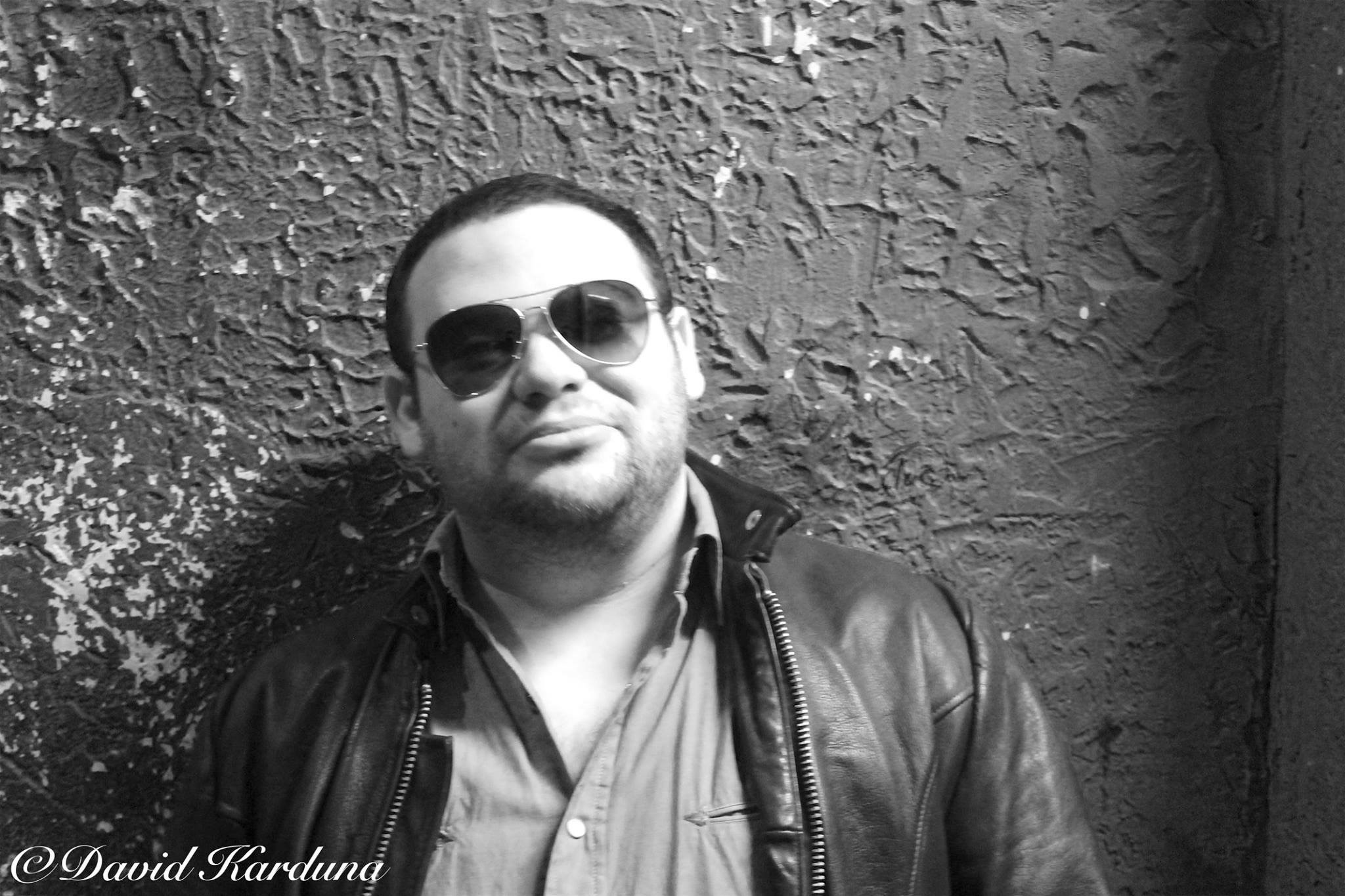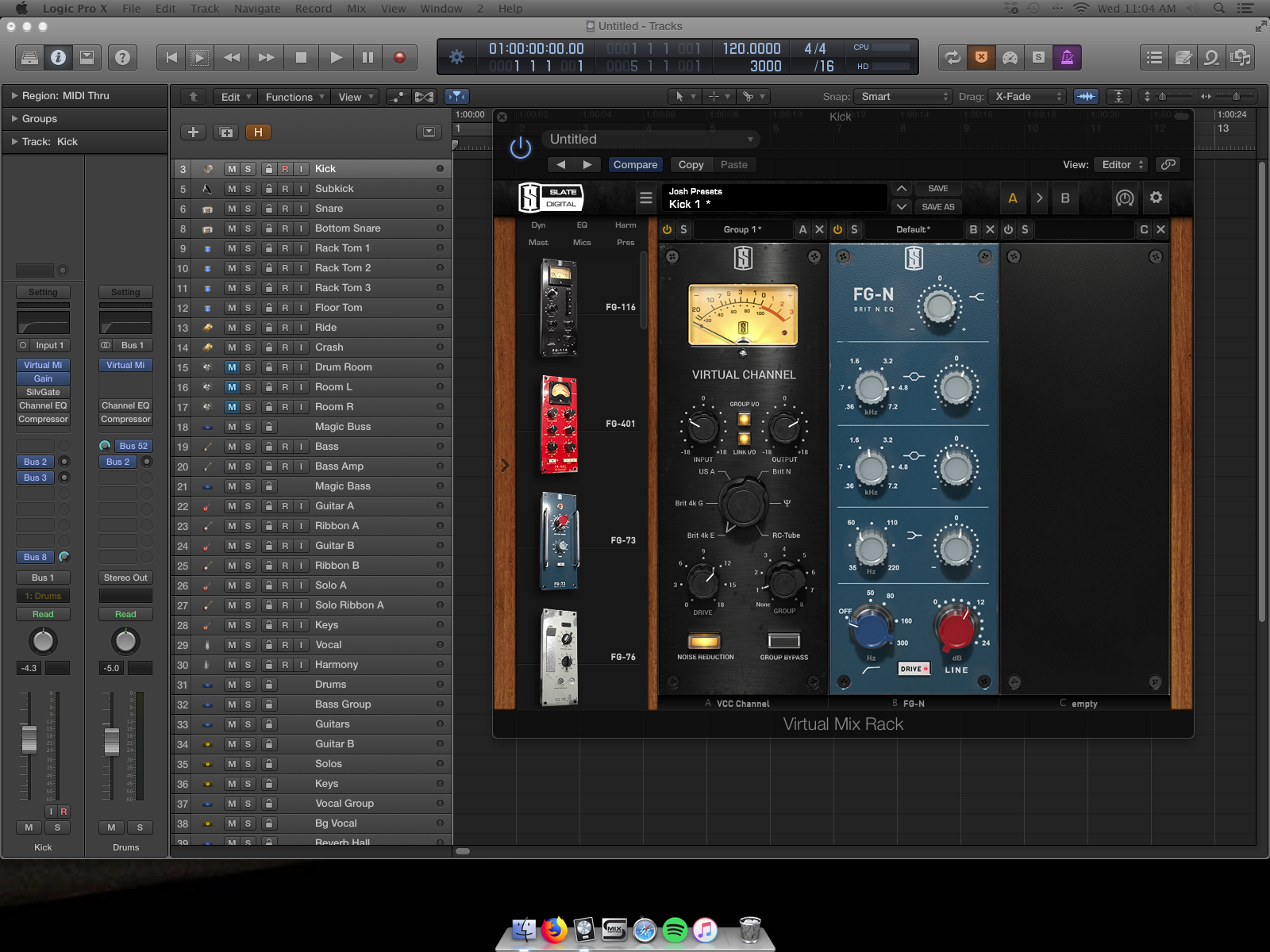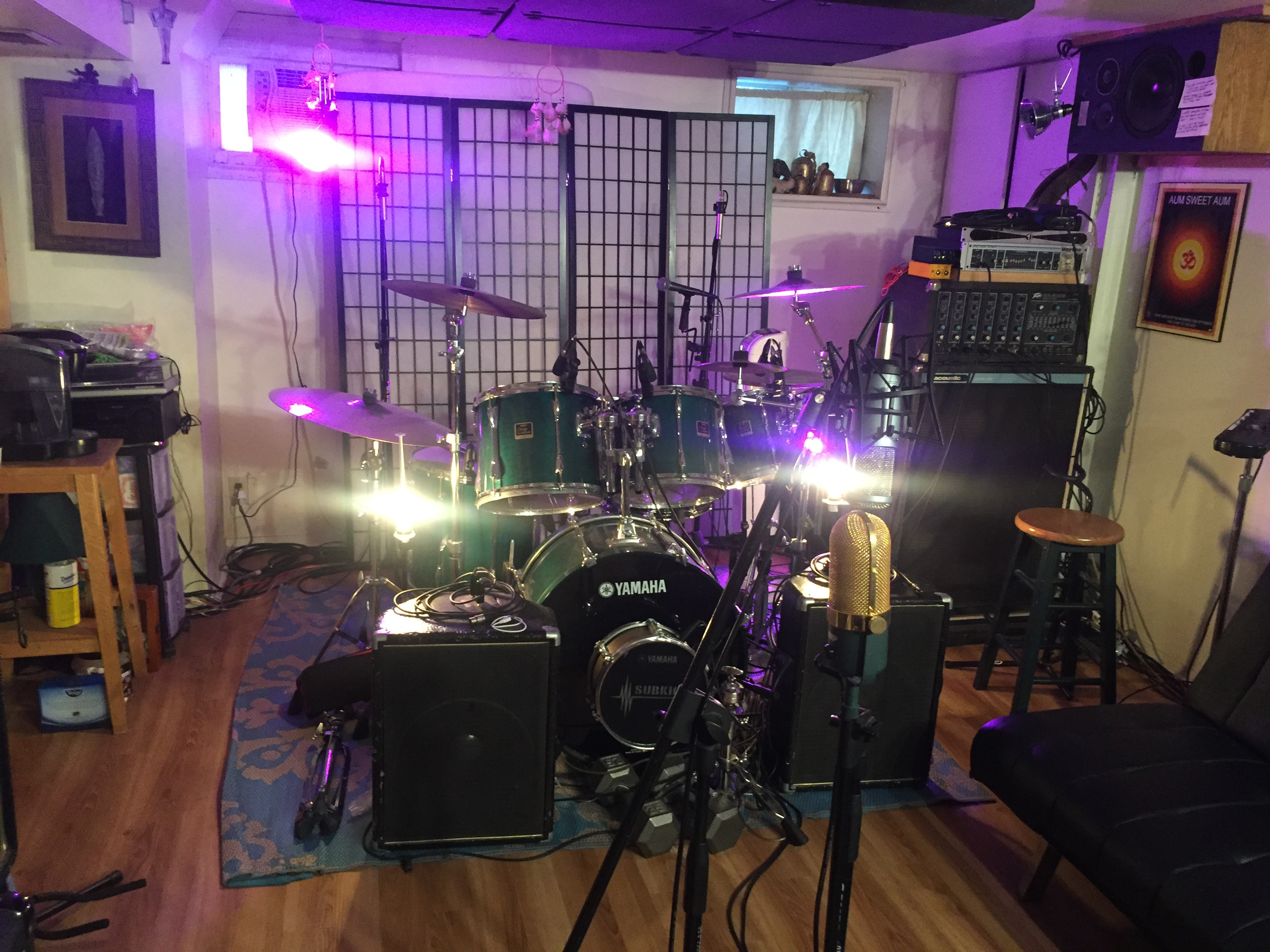Analyzing the Engineer/Producer Relationship — And How to Be Both When Necessary
A lot of us recording people find ourselves wearing two hats, one as an engineer, and one as a producer. I always find it’s easiest to split the job between two people, but sometimes you don’t have that option.
It can be a daunting task to keep a project on track, as well as making sure the engineering is up to snuff.
Here’s where a simple change in outlook will help greatly, and it takes knowing the roles of both an engineer and a producer, and how to get be able to do both jobs seamless and interchangeably. First, a little history.
Producers & Engineers: Early On
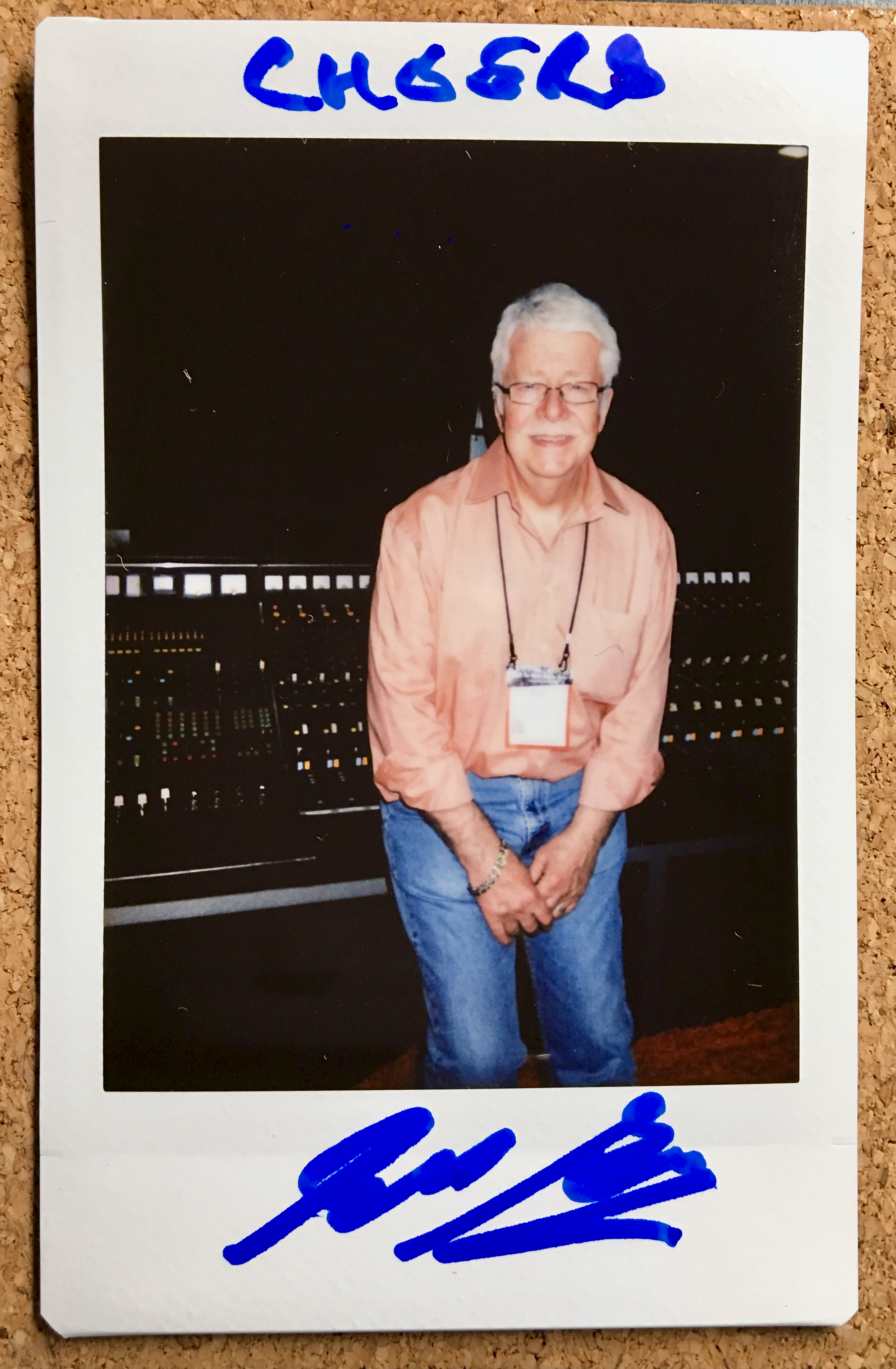
Legendary engineer Ken Scott was referred to himself as a “button pusher” for EMI. (Photo: Jon Lurie)
In the early decades of recording a producer was most often a liaison between the artist and record label. They commonly worked for the record label, and their job was to make sure the artist was fulfilling their contract of working on an album to completion. A lot of these people wore suits, and some knew nothing about music, but had more of a focus on logistics and scheduling, and were more in the business of music rather than the music itself.
An engineer back in those days wore the now famous “white lab coats”, and most weren’t musicians, but straightforward engineers scientists! – and were technically inclined to build and fix what was required for their most important role, THE CAPTURE.
The men in the white coats would receive a form from the recording staff of what was needed for a particular session and fill the “order” with the necessary gear (microphones, stands, instruments), as well as do a complete setup in the live room. This was so the recording staff (tape ops and “button pushers”, as Ken Scott of EMI called them) can do their job from the control room.
Both of these roles have evolved greatly today. Modern producers and engineers have wildly different job descriptions from that of in the past. And even in a modern sense, the producer and engineer still have different roles and tasks at hand from each other. Here are a few reasons why some recording studios employ a “tag-team” approach to recording.
Know Your Role(s)
1- The right brain and the left brain.

It’s not ALL creative: The imaginative right side of the brain and analytical left side both get a workout during a recording session. (Image: Shutterstock.)
Of course, both engineer and producer use both sides of their mind, but in a session, engineers think mainly in the left brain, which is the more analytical side of the cranium. Meanwhile a producer may think mainly in the right “creative” side of the brain.
Engineers can focus on the logistics of setting up and dialing in equipment and producers can focus on keeping the talent comfortable and focused on the music. Splitting these two tasks up can help keep the session running smoothly, and helps prevent burn out for individuals on the team.
This also frees up the engineer to be creative on a technological side, and frees up the producer to be more creative with the talent, and less bogged down in the gear.
2- The different outlook in VIEWING a project between both roles.
Engineers have a zoomed in picture where the priorities lie in signal flow, levels, and in specific frequencies and parameters. Whereas producers have a bird’s eye view for aspects such as arrangement, necessity of certain parts, tuning and timing, overall flow of the song (or complete record) and the overall “artistic vision”. These roles happen simultaneously, and while a producer is working out a troublesome part with the band, the engineer is already tweaking the mix. This speeds up the project and bodes for better results.
3- Engineers as the HANDS, producers as the EARS, and the common back and forth and convergence of both roles.
A producer may want something to sound “wet” with the use of FX and may not know how to achieve the tone exactly. An engineer can facilitate by choosing a plate or hall reverb or certain delay to give the producer the sound they are looking for.
Engineers decode what a producer is trying to say into parameters for the tools we use. Conversely, if an engineer tries something wacky with a mix, the producer can help communicate more of what they are looking for when things aren’t right. These roles interplay and switch throughout the session, while keeping a good balance for optimum productivity.
4 – Keeping the session on track.
Producers help with scheduling with the talent, as well as the day-to-day game plan of the session such as time allocation for specifics in tracking. A producer might want to start by tackling a lead vocal in the beginning of the day when the talent is fresh and do backup vocals with the other singers later in the day. Some producers know their talent so well they know if they sound better before or after a meal, and plan accordingly.
Engineers must have clear communication with the producer and set up accordingly, and preferably have the session patched and mics set up for the specific tasks at hand. Engineers also have to get a feel for the preferences of the producer, and help dial in specific settings to get things sounding the way the producer intends.
Some producers like a roomier sound, and engineers can use different mic placement and compression techniques to get the sound “right” from the get-go.The better the prep done by the engineer, the smoother the session — and the less the producer has to think about gear so he or she can focus on the music.
5- Two heads are better than one.
Having two sets of ears can help work out trouble spots in a recording long after the talent is gone. During a mixdown, both sides can help the other from descending into a pitfall when something sounds off. Sometimes an engineer can have ear fatigue working on a mix for a long time, and a fresh set of producers ears help. Sometimes a producer has been working with the talent for months, and might need ear reinforcements to iron out a part. Checks and balances for both sides of the unit.
A simple example of this could be a member or the team suggesting making a single track darker or brighter to sit better in a mix, or nudging the timing of a track. Once it is tried, then we decide!
I know in my team, we have a “don’t knock it till ya rock it” approach and sometimes seemingly wacky ideas are tried before they are dismissed. If they sound good and help the track, it is kept! Many compromises are made, and a good team can work very well together to have the product shown in its best light.
When a recording team is focused and the duties are split up, things can seem to go faster with less pressure on the individuals in the team. And the best part is, it’s more fun to work that way!
Going it Alone
So now you may find yourself fighting the good fight alone, no one to blame, and no safety net to prevent you from getting trapped in pitfalls. Or is that really the case?!
It pays to know when to zoom in, and when to zoom out. Fortunately, there are a few ways to keep your ideas fresh while employing both engineering and production skillsets yourself.
The Mix Template/Engineers on Autopilot
It is a huge help to get the mundane tasks of engineering out of the way when producing, and a recording/mix template is essential.
I always have my template with all my inputs routed, FX sends and Returns, and my go-to EQ’s and compressors ready to go, and set to optimal starting places.
Personallly, I usually like to boost a little 5khz and 60hz on my kick, so my EQ is already set. And if something isn’t working, I can easily make a change, but my brain is mostly freed up to tackle the music, and less bogged down with signal routing.
Mics are Flown
As stated before, all the mics are up, the board is patched and many mics are flown (just in case the client throws you a curveball, you are ready). It pays to have multiple and different mics set up and ready to keep your creative juices flowing. The last thing you want to think about is “Where the hell is that other mic stand?” or “Does this mic cable work?” Instead, you want to produce and maybe even use some those unused mics as room mics!
Keyboard Shortcuts
Another big assist is keyboard shortcuts. Why spend all that valuable brain power on searching through menus when you can get what you need at a push of a button?! So take the time to know your shortcuts – quiz yourself on those hot keys!
Mix as You Go
While the band is tracking, I am already mixing. I think it’s a good time to start this because you are alone in the control room, and have the freedom to experiment on the little parameters of the engineering side while the band is in the other room. The left side of the brain at work!
When the band comes in for a first listen, I already have my tones close to where i see it in the final product. But, as the band has ideas, I can volley back and forth with them and go back to the creative right side of my brain, and seamlessly slide right back into production!
Editing
Although keyboard shortcuts help, editing can be draining. This requires mostly the left (analytical) side of your brain, use of zoomed-in precision and your eyes. Once you think you nailed it or are getting close, a helpful trick to get back into the producer’s mindset is to CLOSE YOUR EYES and listen to the edit. DONT USE YOUR BRAINPOWER FOR YOUR EYES OR HANDS at this point — insteadand focus on the music. Make mental notes for changes and then go back into Engineering Land.
Check Yourself
Sometimes something as simple as focusing brain power to your ears alone is enough to check your own mistakes.
As engineers we are constantly tweaking, using our hands and eyes. There comes a time where we have to stop and zoom out. Take your hands and eyes out of the equation and listen to your work. Mental notes help if tweaks are needed, and it pays to try a LISTENING PASS, where you are just listening and not touching your mouse, and an ENGINEERING PASS, where you are hands on to make the changes.
This is my way of dedicating time to zooming IN and zooming OUT. Even better, TAKE A LITTLE BREAK between these two passes, it makes a big difference to keep you fresh.
The Artist
It’s most important to listen to your clients’ ideas, and keep your head in the game of production.
They are the artist and should have a good idea of what they want out of the recording. The engineering side has to be done with great care, and this skillset should become second nature to be able to spend the real brainpower on working with the artist. Knowing how to wear the two hats of engineering and producing is a necessary skill for success in this industry. The clients didn’t come to you for your gear, they came to you for your skill, ideas, and your personality to help get the most of out of their music!
Josh Salant and Isaac “Izzy” Friedman are both born and raised in Brooklyn, and are active players in the NYC rock scene and neosoul scene. When they aren’t busy recording at their home base Salant Sound Recording Studio in Canarsie, or playing in the rock band Taylor and the Apes, you can find them pigging out on great food all over NYC.
Please note: When you buy products through links on this page, we may earn an affiliate commission.







